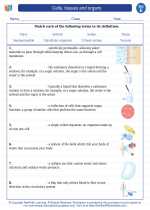Cells, Tissues, and Organs
In the study of biology, cells, tissues, and organs are fundamental units that make up living organisms. Understanding the structure and function of these components is essential to understanding how living organisms function.
Cells
Cells are the basic building blocks of all living things. They are the smallest unit of life and are capable of performing all the functions necessary for life. Cells can vary in size, shape, and function, but they all have certain features in common, such as a cell membrane, cytoplasm, and genetic material (DNA).
There are two main types of cells: prokaryotic cells, which are simpler and do not have a true nucleus, and eukaryotic cells, which are more complex and have a nucleus that houses the genetic material. Examples of eukaryotic cells include plant cells, animal cells, and fungal cells.
Tissues
Tissues are groups of cells that work together to perform specific functions. In multicellular organisms, such as plants and animals, cells of similar structure and function are organized into tissues. There are four main types of tissues in animals: epithelial, connective, muscle, and nervous tissue. Each type of tissue has specific characteristics and functions.
Epithelial tissue forms the lining of internal and external surfaces of the body, providing protection and serving as a barrier. Connective tissue supports and connects different parts of the body, such as bones, tendons, and ligaments. Muscle tissue is responsible for movement and can be categorized into three types: skeletal, smooth, and cardiac muscle. Nervous tissue is made up of neurons and is responsible for transmitting signals throughout the body.
Organs
Organs are structures made up of two or more different types of tissues that work together to perform specific functions. Examples of organs in the human body include the heart, lungs, liver, and brain. Each organ has a specific role in maintaining the body's overall function and health.
Organs are often organized into systems, such as the digestive system, respiratory system, and circulatory system, which work together to carry out essential functions for the survival of the organism.
Study Guide
Here are some key points to remember about cells, tissues, and organs:
- Cells are the basic unit of life and can vary in size, shape, and function.
- Tissues are groups of cells with similar structure and function that work together to perform specific tasks.
- There are four main types of tissues in animals: epithelial, connective, muscle, and nervous tissue.
- Organs are made up of different types of tissues and work together to carry out specific functions in the body.
- Organs are often organized into systems, which work together to maintain the overall health and function of the organism.
Understanding the relationship between cells, tissues, and organs is essential for comprehending the complex organization and function of living organisms.
.◂Science Worksheets and Study Guides Fifth Grade. Cells, tissues and organs
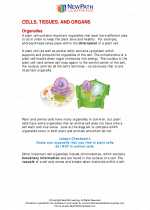
 Worksheet/Answer key
Worksheet/Answer key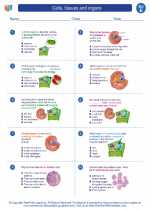
 Worksheet/Answer key
Worksheet/Answer key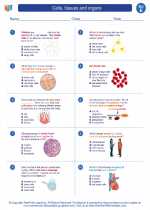
 Worksheet/Answer key
Worksheet/Answer key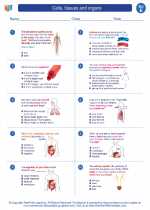
 Vocabulary/Answer key
Vocabulary/Answer key
 Vocabulary/Answer key
Vocabulary/Answer key
 Vocabulary/Answer key
Vocabulary/Answer key
 Vocabulary/Answer key
Vocabulary/Answer key
 Vocabulary/Answer key
Vocabulary/Answer key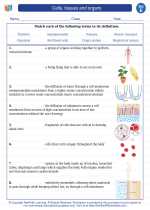
 Vocabulary/Answer key
Vocabulary/Answer key